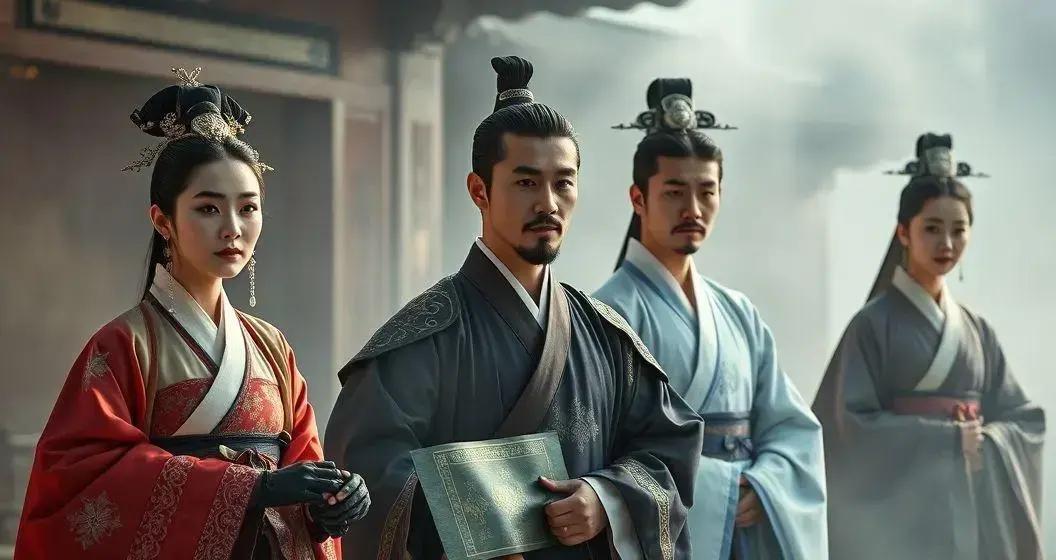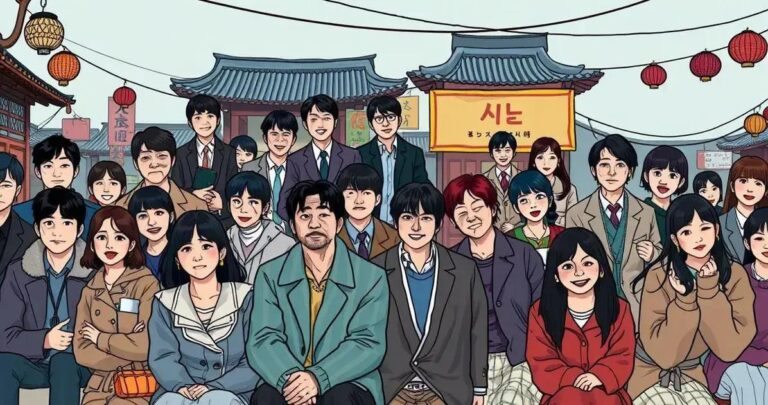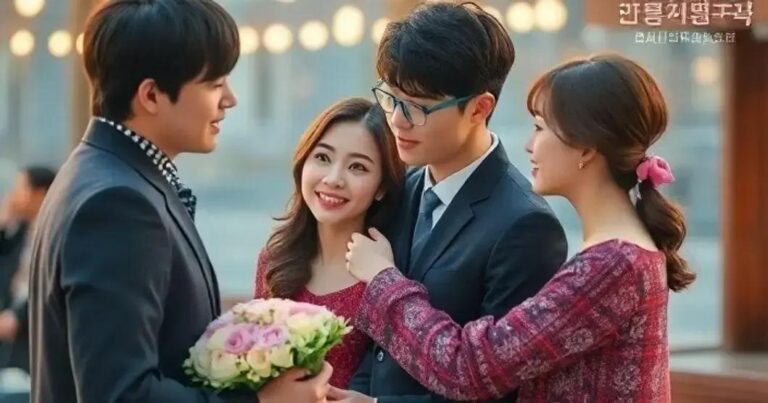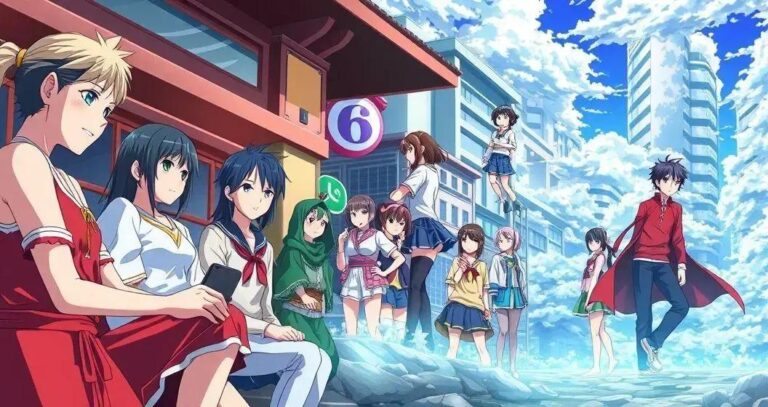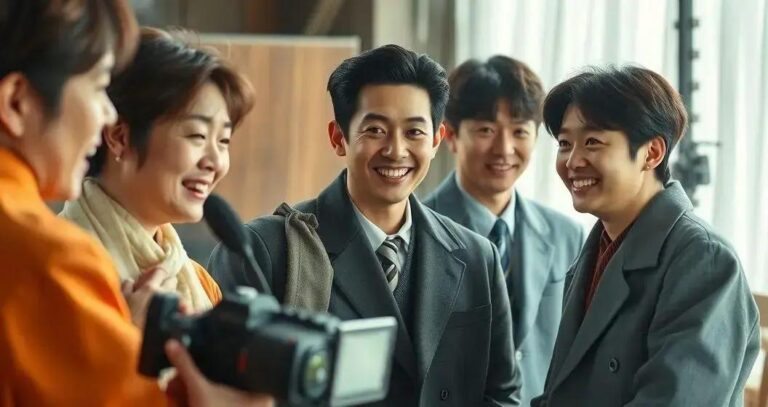Korean Historical Drama: Discover the Fascinating World of Past Korean Dynasties
Anúncios
**Korean historical drama** captivates audiences worldwide by diving deep into the rich tapestry of Korea’s past. These dramas offer more than entertainment—they reveal the intricate stories of ancient Korean dynasties, from charismatic queens to cunning generals. As you explore the world of Korean historical drama, you’ll encounter remarkable costumes, intriguing plots, and powerful music that bring history to life. Discover how these shows reflect societal changes and incorporate true events, inviting viewers to experience the essence of Korea’s heritage.
Exploring the Rich History of Korean Dynasties
Korean dynasties offer a fascinating window into the past, each with its unique story and culture. These dynasties were marked by powerful monarchs, grand architectural achievements, and profound cultural developments. Within Korean historical dramas, these elements come to life, providing a vivid snapshot of a time when ambition and artistry shaped the lives of many. Silla, Goryeo, and Joseon are among the most famous dynasties that have inspired numerous storylines.
The Silla Dynasty
The Silla Dynasty, known for unifying Korea, brings tales of legendary battles and royal intrigue. Dramas set in this era often depict brave warriors and wise kings, offering viewers a chance to experience the birth of a nation’s identity.
The Goryeo Dynasty
The Goryeo Dynasty, famous for its cultural sophistication, was a time of thriving arts and innovative technologies. Dramas portraying Goryeo reflect its expansive trade networks and the influence of Buddhism on its society, weaving rich tapestries of political and spiritual storytelling.
The Joseon Dynasty
The Joseon Dynasty, lasting over five centuries, has inspired countless dramas with its tales of Confucian scholars and courtly politics. Known for its emphasis on literature, science, and technology, Joseon’s influence is still felt today. Dramas highlight pivotal moments, such as reforms and historic figures, indicating the era’s lasting legacy.
Korean historical dramas offer an immersive experience by weaving these dynastic stories into compelling plots, complete with intricate costumes and breathtaking settings. These series not only entertain but also educate, revealing a rich history full of triumphs and trials.
Famous Korean Historical Dramas You Should Watch
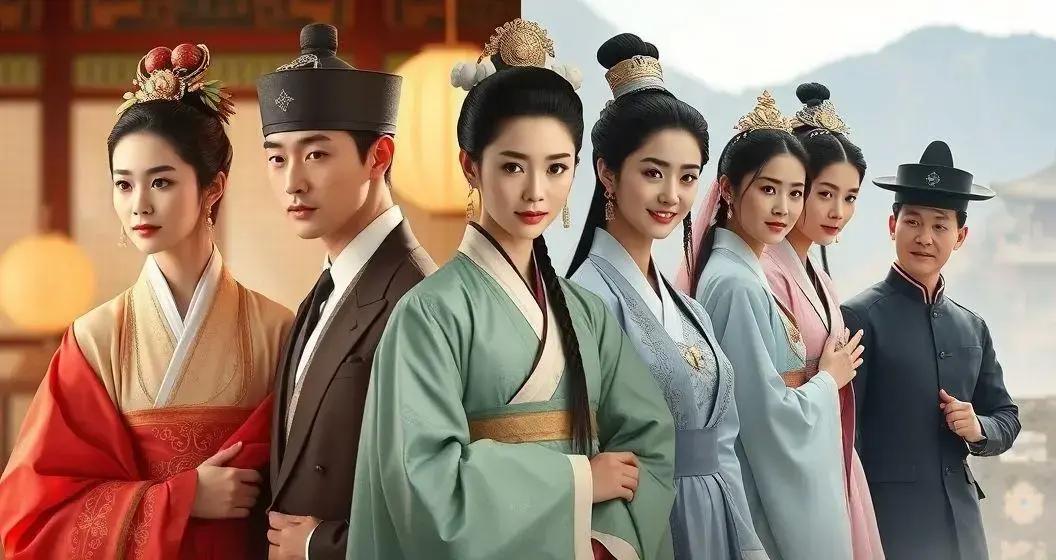
Korean historical dramas offer enchanting stories and extraordinary acting that immerse viewers in Korea’s past. These dramas have gained worldwide admiration for their complex characters and dynamic plots. When exploring this genre, several must-watch series stand out.
“Dae Jang Geum (Jewel in the Palace)”
This iconic series tells the story of Jang Geum, the first female royal physician of the Joseon Dynasty. It beautifully portrays her journey from a humble cook to a healer, capturing the essence of perseverance and talent amidst court politics.
“Moon Embracing the Sun”
Set in a fictional era, this series blends romance and mysticism, following a crown prince and a shamaness separated by fate. Its lush visuals and gripping plot offer viewers a fresh perspective on love and destiny in royal courts.
“Empress Ki”
This epic drama talks about Ki Seung Nyang, a Goryeo-born woman who rises to power within the Mongol Empire. Full of action and bravery, it highlights her inner strength and clever maneuvering in a male-dominated world.
“Mr. Sunshine”
Set in the late 19th century, this visually stunning drama follows a Korean boy who returns as an American Marine officer. It explores complex themes of identity and patriotism during Korea’s turbulent path towards modernization.
Each of these dramas provides a unique glimpse into Korean history, blending fact with fiction to bring engaging stories to life. Whether you are drawn to heroic journeys or romantic sagas, these series cover all facets of historical intrigue.
The Evolution of Costume Design in Korean Historical Drama
The evolution of costume design in Korean historical dramas reflects both artistic creativity and historical accuracy. Costumes play a significant role in visually transporting the audience to different eras, often underscoring the social status and roles of characters within the storyline.
Traditional Hanbok
Most historical dramas feature the iconic hanbok, a traditional Korean outfit. With its vibrant colors and graceful lines, the hanbok distinguishes characters’ ranks and societal roles, from royalty to commoners.
Regal Wardrobes
Costumes of kings and queens are often richly embroidered and adorned with silk, representing their esteemed positions. Attention to detail, like the patterns and colors used, provides insight into the wearer’s power and period-specific fashion.
Warrior Attire
Warrior costumes emphasize function and strength, often including leather and protective gear. These costumes not only suit action-packed scenes but also highlight the valor and courage required during historical battles.
Bureaucratic Dress
For characters involved in court politics, sophisticated robes and official hats indicate their authority. These ensembles often illustrate shifts in power during the complex political intrigues depicted in dramas.
Costume designers delve deeply into historical texts and artifacts, ensuring authenticity while integrating contemporary aesthetics. Through meticulous research and craftsmanship, they bring the past to life, allowing viewers to appreciate the rich tapestry of Korea’s historical fashion.
How Korean Historical Drama Reflects Social Changes
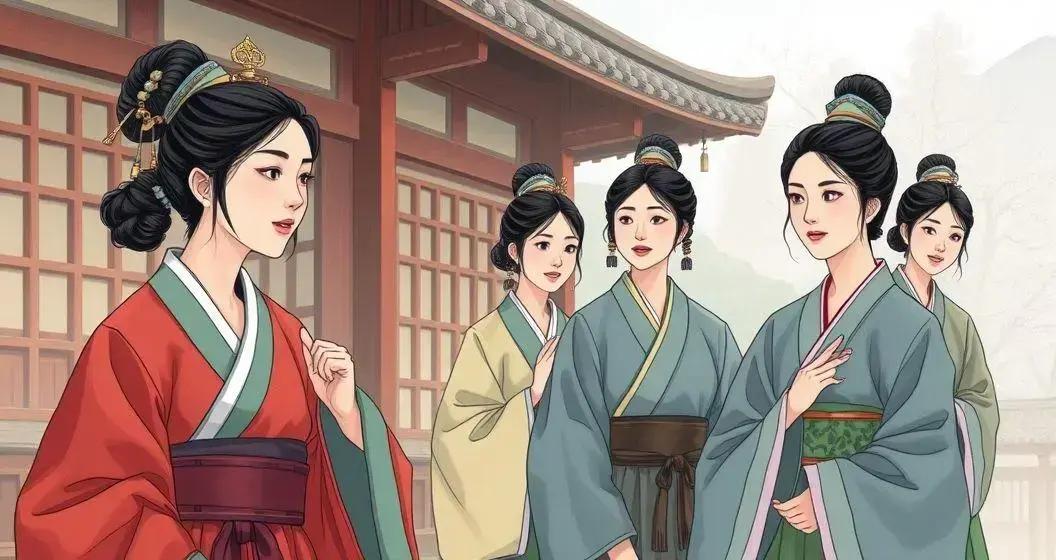
Korean historical dramas provide valuable insights into the social changes that have shaped Korean society over the centuries. By depicting the struggles and triumphs of various characters, these dramas reflect significant shifts in gender roles, class divisions, and cultural values.
Gender Roles
Many historical dramas highlight the changing roles of women in society. Characters like queen regents and female warriors challenge traditional gender norms, showcasing the evolving perceptions of women’s capabilities and influence in a patriarchal system.
Class Barriers
Class struggle is a recurring theme in historical dramas, often depicting the plight of peasants against the ruling elite. These narratives illustrate the harsh realities of social hierarchy and hint at the gradual breakdown of rigid class barriers, paving the way for a more egalitarian society.
Cultural Exchange
As Korea interacted with neighboring countries, cultural exchange became a vital aspect of its history. Dramas reflect these cultural shifts and the integration of foreign elements into Korean society, presenting a narrative of adaptation and innovation.
Values and Ideals
The moral dilemmas faced by characters often mirror shifting societal values and philosophical thoughts, like the influence of Confucian ethics. These elements illustrate the tension between traditional and modern ideals, providing viewers with a lens through which to view contemporary social issues.
Through artistic storytelling, Korean historical dramas encapsulate the essence of past societal transformations, offering not only entertainment but also educational perspectives on Korea’s dynamic history.
Influence of True Historical Events on Korean Dramas
Korean historical dramas often draw inspiration from actual events, creating stories that resonate with viewers by blending fact with fiction. These dramas explore significant historical events, providing insight into pivotal moments in Korean history.
The Imjin War
The Imjin War, a series of invasions by Japan during the late 16th century, is a prominent event depicted in many dramas. The heroic tales of generals like Yi Sun-sin, known for his innovative naval strategies, often feature prominently, showcasing bravery and resilience.
The Goryeo-Mongol Wars
Dramas set during the Goryeo-Mongol Wars highlight the complexities of international relations and the fierce battles that shaped dynastic changes. The intricate political maneuvers present a backdrop for thrilling storylines filled with alliances and betrayals.
Political Turbulence of Joseon
The political intrigues of the Joseon Dynasty offer rich source material, focusing on court disputes and reform efforts. Characters inspired by historical figures navigate through ambitious power struggles, illustrating the intricacies of governance and reform.
End of the Joseon Dynasty
The decline and eventual transition of the Joseon Dynasty into modern Korea are depicted with drama and accuracy. This transformative period showcases both the societal upheaval and the birth of a new Korean identity.
By weaving historical events into their narratives, Korean dramas educate and entertain audiences, preserving Korea’s rich history through compelling characters and dramatic plots.
Top Korean Historical Drama Soundtracks and Scores
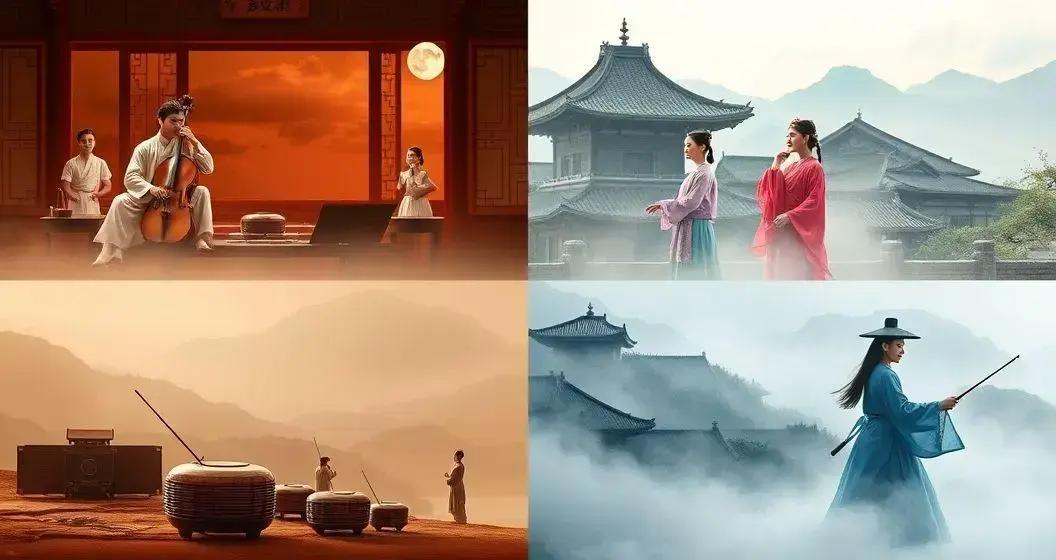
Korean historical drama soundtracks and scores are crucial in bringing the emotional depth of the stories to life. They enhance dramatic scenes and transport listeners to the era depicted on screen. Some of the most memorable scores have captivated audiences thanks to their rich melodies and powerful emotions.
“Jewel in the Palace” Soundtrack
This series is renowned for its beautiful, traditional melodies that echo the cultural essence of Korea. The soundtrack transports viewers with its serene and evocative compositions, making it unforgettable.
“Moon Embracing the Sun” Score
With haunting tunes and orchestral arrangements, this drama’s score evokes the poignant love story at its heart. The music masterfully weaves between dramatic tension and heartfelt moments.
“Empress Ki” Themes
The soundtrack merges traditional Korean music with dramatic orchestral pieces. This blend reflects the grandeur and intensity of the era, enhancing each royal intrigue and battle with musical depth.
“Mr. Sunshine” Music
Crafted with a mix of classical composition and emotional instrumentals, the soundtrack highlights its themes of love, loyalty, and the complexities of modernizing Korea. Each piece complements the series’ epic narrative.
These soundtracks and scores are more than background music; they are integral to the storytelling. They enrich the viewers’ experiences and underscore the historical and emotional context of each scene.
Embracing the World of Korean Historical Drama
Korean historical dramas provide a unique lens through which viewers can explore Korea’s rich and dynamic past. From captivating narratives rooted in true historical events to the evolution of costume design reflecting intricate social structures, these dramas offer something for everyone.
The intricate storytelling and exquisite scores elevate these dramas beyond entertainment, offering educational insights while capturing the complexities of human emotion. Whether it’s through the exploration of dynasties or the influence of deep cultural shifts, historical dramas continue to resonate profoundly with audiences worldwide.
As you journey through these dramas, appreciate their vivid details and the masterful blend of fact and fiction that keep the stories alive. Embrace Korean historical dramas and discover the fascinating world of past Korean dynasties.

